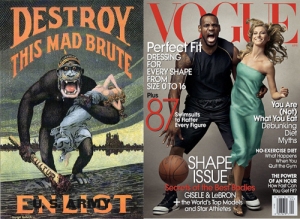Lily Allen’s music video for her single, “Hard Out Here”, is yet another installment of how white artists implicitly add a racial dialogue to deliver and solidify their messages. What is oppression? Oppression is when your culture and bodies become tools to promote white artist’s careers and criticisms of society. It is how musicians’s “anti-consumerist” messages have been embedded in consumerism closely associated with hip-hop and thusly African American culture. In “Hard Out Here”, Allen asserts that you would never hear her talk about her chains. In becoming “anti-consumerist”, Allen only targets one type of consumer: African Americans. Oppression is also having your body become hypersexualized and on display in an effort to critique sexism while reinforcing negative stereotypical representations of your identity. Allen, while fully clothed, is surrounded by mostly women of color who are: twerking in bikini coverage style outfits, provocatively touching themselves, and dowsing themselves in champagne. Although this video is meant to be a parody, Allen’s representation of African American women just reinforces racist tropes about them in music videos. Oppression of this nature between women is nothing new, as bell hooks pointed out that “sexism is perpetuated by institutional and social structures” (127). The institution of racism still permeates our society and divides our women’s movement, as seen in the popular twitter movement over the summer started by Mikki Kendal #solidarityisforwhitewomen. There’s much to do for gender equality, but if we’re getting there through putting other women and cultures down, can we really call it progress?
Works Cited:
Hooks, Bell. “SISTERHOOD: Political Solidarity Between Women.” Feminist Review 23 (1986): 125-138. Print.

